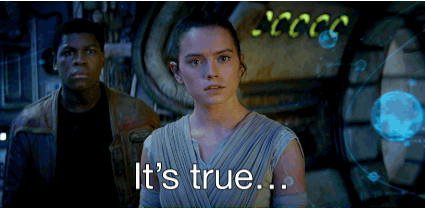HoloLens: The future of augmented reality
It was early May and Christmas just arrived to the office of INDE. We got our HoloLens development kit from our US office, and we were jumping up and down like kids who got the toy they always wanted. Okay, maybe it was just me doing that, but everyone was excited about it. We all tried it on, and there were a lot of “unbelievable”s, “OMG”s, “bloody brillant”s around, and yes, a lot of swear words followed by “this is awesome”.
There is already a lot that said and written about the HoloLens, and with the words of Han Solo:
Let me just state that if I start to sound like an excited fanboy about HoloLens, it’s not because I’m one. We at INDE think HoloLens and other future untethered AR devices has a lot more potential than VR? Sure, VR will have its completely deserved place in a lot of homes, for gaming and blissful virtual escapes, but AR will be bigger, will be applied in more fields and will eventually make its way into homes, as long as it can be unintrusive. So when we see a device that’s starting to show the shape of the future AR, it’s not fanboyish to get excited.
The experience the development toolkit provided was beyond what we thought it was going to be. We heard about the narrow field of view, and having an Epson’s Moverio at the office for a while, and developing a tech demo with Vuforia, we knew how limiting viewing the virtual content through a letterbox can be. So the narrow field of view was something that made us cautious about the HoloLens. Well, there IS a limited field of view, but because the tracking is so incredibly stable, it doesn’t really matter. True, that is probably the first thing you notice when you put the HMD on, but then you just forget about it.
When we got the device, we immediately went and put one of our dinosaur pets into it to see what it looks like. You can see the result in one of our early demos below. The dino is happy to escape from the 2D constraints of a screen. The concept of seeing an extinct animal in front of us was not new to us, but the level of immersion was just something else.
The problem with HoloLens is the same as VR headsets face: it’s VERY hard to explain it without experiencing it first-hand. You can see the incredible videos out there, and say “sure, it’s one of those marketing concept videos that was put together in post fx”, because quite frankly, the output is so incredible. But when you put it on, that’s when the magic starts.
The tech behind the magic is not something that can be summarized without making it sound overly simplistic. A lot sensors are working together to create a 3D representation of your room, house, office on the fly and use that model to determine where the HoloLens actually is. This is why you can place a piece of content on the wall of the meeting room, walk outside, place a hologram in the lounge, then walk back in the meeting room, and find the same content at the same place where you left it. Then you turn the HoloLens off, go home, come back the next day, turn it back on, and find every single hologram and window exactly (or close) where you left it.
My colleagues are probably fed up with me repeating it over and over, but HoloLens can turn your world into your Windows desktop. Will it replace your regular screen and your trusted old Windows desktop? In the future, possibly,, but not in the short term, and probably not until the field of view is wider and the device is smaller. Will it take over education? After I (very nervously) let my kids try it on and play with it, I’m confident it will. After 3 minutes, they used it as if they were born with it, and they asked more about the Solar System during their short time playing with the Solar Explorer application on HoloLens than in the last 8 years combined.
Will it affect e-commerce? Training? Research? Absolutely. Will it alienate people, and drift us apart? That’s partly the responsibility of us as developers, and the kind of experiences we develop for it.
For us, and everyone working on something for HoloLens, and future AR devices the challenge is to create an natural user experience that not only wows the user, but also provides meaningful, high quality and informative content and help people get closer to not only the virtual, but to their real world as well. I can’t share a lot of details yet, but we’re already working on it, and can’t wait to show it to the world.

